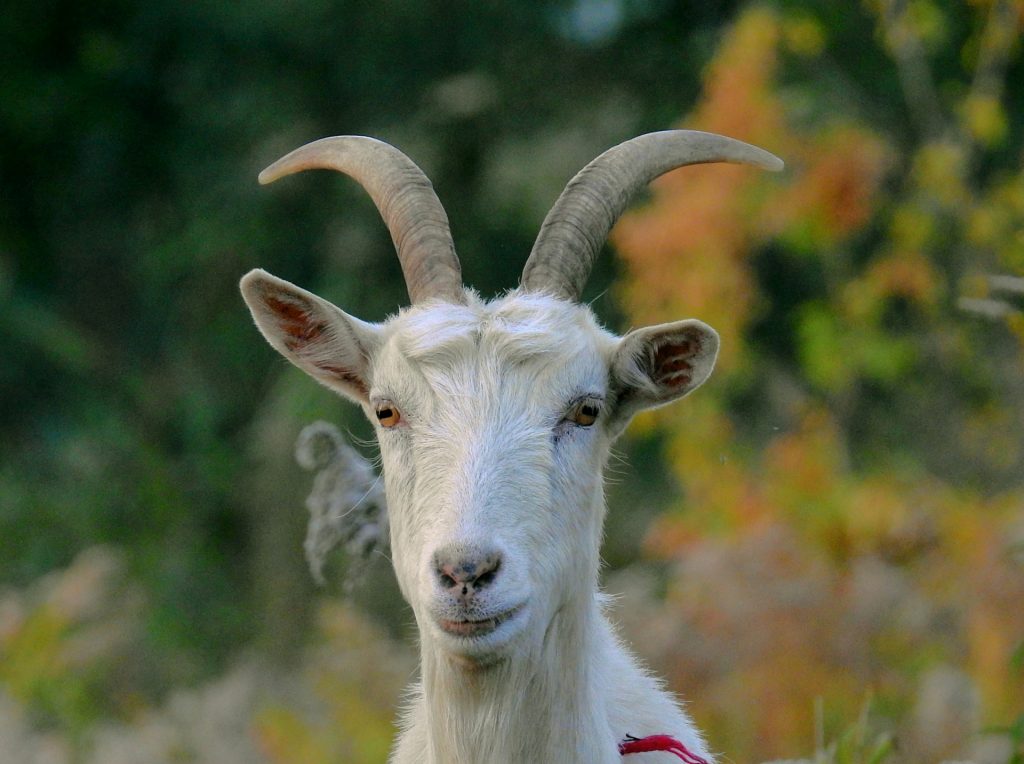County Board Says Send In The Goats
In perhaps his last act as a supervisor, Jason Haas secures funding for a county goats program.
Milwaukee County Supervisor Jason Haas has successfully appropriated funds for the county to use goats to clear out invasive vegetation in the parks system.
The legislation was among the final acts for the outgoing supervisor. He first proposed using goats to eliminate invasive species in October 2021, saying that “I have long ruminated over how to deal with the issue of overgrown vegetation in our county parks and on the bluffs on Lake Michigan.”
The prospect of goats in county parks received great support from county supervisors after the initial proposal, and public feedback was overwhelmingly positive. And goats have been used in other communities, including nearby Mequon.
But a recent report from Milwaukee County Parks laid out the hurdles to using goats to clear vegetation. Chiefly, they can only be used in limited settings and require extensive work by staff before, during and after their use.
In fact, parks has looked at using goats in the past and decided against it, said Ramsey Radakovich, parks operations manager, at a meeting of the county board’s Parks, Energy and Environment Committee. He explained that managing the goats and the land they graze on requires significant resources. The parks department has an infamous lack of resources relative to the extensive land and assets it must manage. Radakovich said the department tries to focus on “high-quality areas” of the parks system. “Where we can maybe make the biggest bang for our buck,” he said.
And any such areas, explained Brian Russart, natural areas program coordinator for the parks, need to be isolated to protect the goats, and would likely require fencing. The goats wouldn’t be transported back and forth, but would instead stay at the site until their job was done. “That does tie into one of our major concerns with them, and that is any kind of vandalism or theft of the goats,” Russart said.
The area would also need to be seriously degraded by an invasive species, like buckthorn. Goats eat everything, so they will clear out any native species and plants as well.
The idea of having goats grazing on Lake Michigan bluffs is also not practical. A goat vendor – likely the only one in this area, according to parks – warned that bluffs were a “non-starter” because of the danger the steep slopes present. Goats along the bluffs, many of which are unstable, would also pose a safety threat to the parks’ visitors, who would be more likely to venture out on bluffs, which don’t currently see much traffic, to see the goats.
Something parks staff explained, which Haas responded to in his legislation, is the need for more funding than originally expected to operate a goats program. “The cost has increased, as virtually everything has,” Haas said.
“The goats really need between three to five years to suppress the vegetation,” Russart said. This means the project requires a multi-year funding commitment.
Parks did identify one location where goats could be used. There’s a portion of Dretzka Park that meets many of the specifications for a goat site.
Parks staff will still likely have to do some brush clearing at any potential goat site, because most of the buckthorn in the parks is 10 to 15 feet tall and goats can only reach up to six feet on their hind legs, according to a parks report.
Parks will also still need to use herbicide after the goats have cleared an area, because invasive species will retake an area after being cleared. “So I don’t see a significant reduction in herbicide use within the parks system, as part of this endeavor,” Russart said.
With the passage of Haas’ resolution, the board is authorizing and requesting that parks staff work on a goat program to demonstrate the potential of goats for the wider system. By the time the first goat sets a hoof on county land, Haas will no longer be sitting on the board. As such, he implored his fellow supervisors to fund the goat program in subsequent years.
At the parks committee meeting, supervisors Sheldon Wasserman and Steven Shea articulated support for the plan based upon the community feedback supporting a goat program. “I think there’s an excitement about goats,” Wasserman said.
“Yes, I believe there is public support for this endeavor,” Shea said, “and if that means we start with just one pilot study, so be it.”
UPDATE: An earlier version of this article misspelled Brian Russart’s name.
MKE County
-
Ron Johnson Says Free-Market Principles Could Fix Education
 Jul 17th, 2024 by Graham Kilmer
Jul 17th, 2024 by Graham Kilmer
-
RNC Will Cause Some County Services To Be Moved to Wauwatosa
 Jul 12th, 2024 by Graham Kilmer
Jul 12th, 2024 by Graham Kilmer
-
Hank Aaron State Trail Will Be Closed For RNC, State Fair
 Jul 12th, 2024 by Graham Kilmer
Jul 12th, 2024 by Graham Kilmer























I have complete faith in these goats and their dedication to doing their job. I have no faith in humanity.
I’ve met too many individuals in my life who received an extreme amount of pleasure from abusing, torturing, and killing defenseless animals. The staff and volunteers at the Wisconsin Humane Society see it every day. I saw it when I worked for the DNR.
I pray to God that somebody will be protecting these animals from human predators, 24 hours a day.
Fence the area. Charge admission to look at the goats (as they eat buckthorn). A new funding source for the parks!
The management of any natural area is a complex and long-term effort. Removal of destructive invasive species is one key aspect of such management.
As parks staff explained, “managing the goats and the land they graze on requires significant resources.”
Among the management issues requiring close supervision will likely be that the goats will eat everything, including desirable native species, and they will likely strip the bark off desirable trees and kill them, unless they are all fenced off.